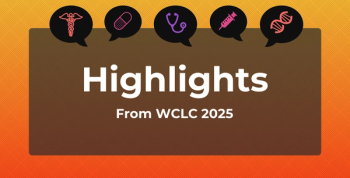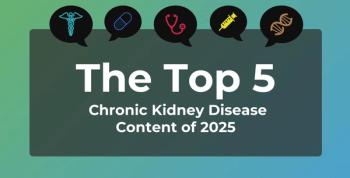
Study Examines Cardiovascular Disease Impact in Patients With COPD
A recent study investigating the cardiovascular contribution to COPD symptoms and their relationship to a patient's diagnostic status found that patients with suspicious echocardiographic findings were undiagnosed and untreated.
Cardiovascular disease is often associated with
The research, published in the International Journal of Chronic Obstructive Pulmonary Disease, included data from the German COPD cohort COSYCONET (COPD and Systemic Consequences—Comorbidities Network). Lung function data was collected including forced expiratory volume in 1 second (FEV1) and echocardiographic data on the left ventricular ejection fraction (LVEF) and end-diastolic diameter (LVEDD).
“The diagnosis of the predominant underlying disease and its contribution to COPD symptoms remains challenging. The situation is complicated by the fact that, even when objective measures of heart function are available, they do not necessarily correlate with the magnitude of symptoms,” the authors explained. “In addition, patients may receive cardiovascular medication, which may alleviate symptoms to a variable degree, depending on the type and severity of cardiac disease. Moreover, the indication that led to medication in the past might not be verifiable at a later time.”
In total, 1591 patients were included and evaluated in the study. In 289 of these patients, ischemic heart disease, myocardial infarction or heart failure was reported, while 860 patients had received at least one cardiovascular medication. Furthermore, of the 948 patients without isolated hypertension, 38% had LVEF <50% and 53.4% with LVEDD>56 mm, who lacked cardiac diagnosis and medication.
In addition, the researchers found that LVEDD and LVEF were linked to medical history, as LVEDD as dependent on residual volume/total lung capacity and LVEF on FEV1.
“The present study revealed a substantial prevalence of cardiac disease in patients with stable COPD, in accordance with previous findings. At least one of the three selected cardiac disorders was reported by about one-fifth of the patients, while the rate of suspicious echocardiographic left heart findings was lower,” concluded the authors. “The overlap between reported cardiac history and abnormal echocardiography was low, and only a minority of patients with a respective history exhibited an impaired left ventricular systolic function or dilatation.”
Due to the results, the researchers suggest that the direct assessment of heart size and function is likely to be more reliable in the detection of concomitant cardiac disease in COPD patients.
Reference
Alter P, Mayerhofer BA, Kahnert K, et al. Prevalence of cardiac comorbidities, and their underdetection and contribution to exertional symptoms in COPD: results from the COSYCONET cohort [published online September 20, 2019]. International Journal of Chronic Obstructive Pulmonary Disease. doi.org/10.2147/COPD.S209343.
Newsletter
Stay ahead of policy, cost, and value—subscribe to AJMC for expert insights at the intersection of clinical care and health economics.









































